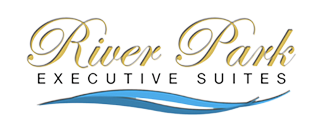Memorable Impressions: A visually appealing and unique office space can leave a lasting impression on visitors, clients, and business partners. It creates a memorable experience that reinforces positive associations with your brand and sets you apart from competitors.
Word-of-Mouth Marketing: A great office space can become a talking point among clients, visitors, and employees, generating positive word-of-mouth marketing and reinforcing your brand's reputation in the industry.
Overall, investing in a great office space is not just about creating a functional workspace; it's also about shaping how your brand is perceived by others. By aligning your office environment with your brand values and identity, you can create a positive impression that strengthens your brand image and helps drive business success.
Employee Satisfaction and Productivity: Quality amenities contribute to a positive work environment, enhancing employee satisfaction and morale. When employees feel valued and comfortable in their workspace, they are more likely to be productive and engaged in their work.
Talent Attraction and Retention: In today's competitive job market, companies need to offer more than just a salary to attract and retain top talent. High-quality amenities can be a key differentiator, helping companies stand out as employers of choice and attracting skilled professionals who prioritize work-life balance and well-being.
Enhanced Collaboration and Creativity: Amenities such as collaborative workspaces, lounges, and recreational areas encourage interaction and brainstorming among employees, fostering creativity and innovation. These spaces provide opportunities for informal meetings, networking, and idea exchange, which can lead to new insights and solutions.
Health and Wellness: Wellness amenities such as fitness centers, meditation rooms, and healthy snack options promote employee health and well-being. By investing in the physical and mental wellness of their workforce, companies can reduce absenteeism, improve employee retention, and increase overall productivity.
Improved Work-Life Balance: Amenities that support work-life balance, such as flexible workspaces, onsite childcare facilities, or concierge services, help employees manage their personal and professional responsibilities more effectively. This can lead to lower stress levels, higher job satisfaction, and better overall quality of life.
Competitive Advantage: Offering great amenities can give companies a competitive edge in the market. Businesses that invest in high-quality office spaces with desirable amenities may be able to command higher rental rates, attract higher-caliber tenants, and maintain higher occupancy rates compared to properties with limited amenities.
Brand Image and Reputation: The quality of a company's office space reflects its brand image and reputation. A modern, well-equipped office with great amenities conveys professionalism, credibility, and success to clients, partners, and stakeholders, enhancing the company's overall reputation and brand perception.
Overall, investing in great amenities can yield significant returns for both landlords and tenants by driving employee satisfaction, attracting top talent, fostering collaboration and innovation, promoting wellness, and enhancing the company's brand image and competitive position in the market.



